On October 31 and November 1, 2025, Tsinghua Laboratory of Brain and Intelligence, in collaboration with domestic and international peers in non-human primate neuroscience research, hosted the 3rd Marmoset Neuroscience Symposium at Tsinghua University. The event brought together scholars from research institutions in China, Japan, South Korea and Australia to share the latest scientific and technological achievements, and explore the future development prospects in the field of marmoset neuroscience. With over 200 faculty members and students in attendance, the symposium facilitated in-depth exchanges and lively discussion, achieving high-quality academic dialogue and successfully fulfilling its intended goal of promoting academic sharing and collaborative advancement in marmoset neuroscience.
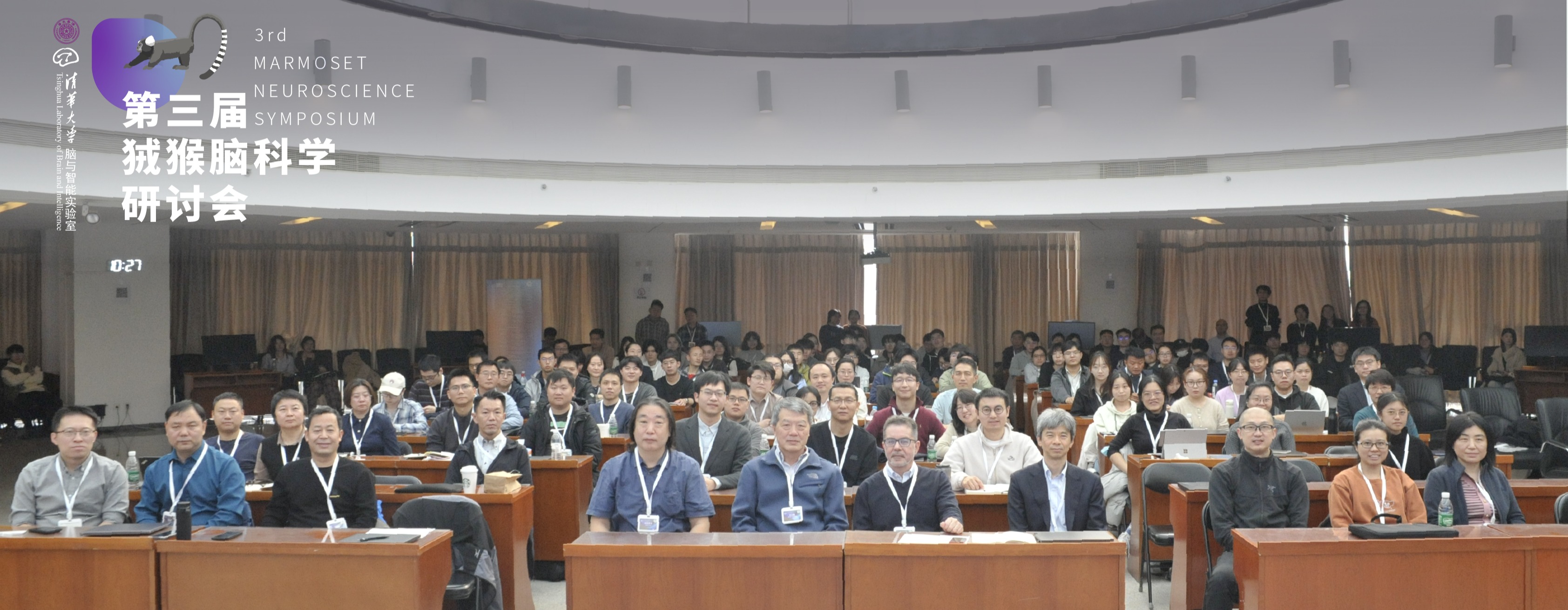
Group photo of all participants
In his opening address, Professor Xiaoqin Wang, director of Tsinghua Laboratory of Brain and Intelligence, recalled the development of Marmoset Neuroscience Symposium in China (the 1st in Beijing, 2023; the 2nd in Shanghai, 2024) and shared his expectations for this year’s event.
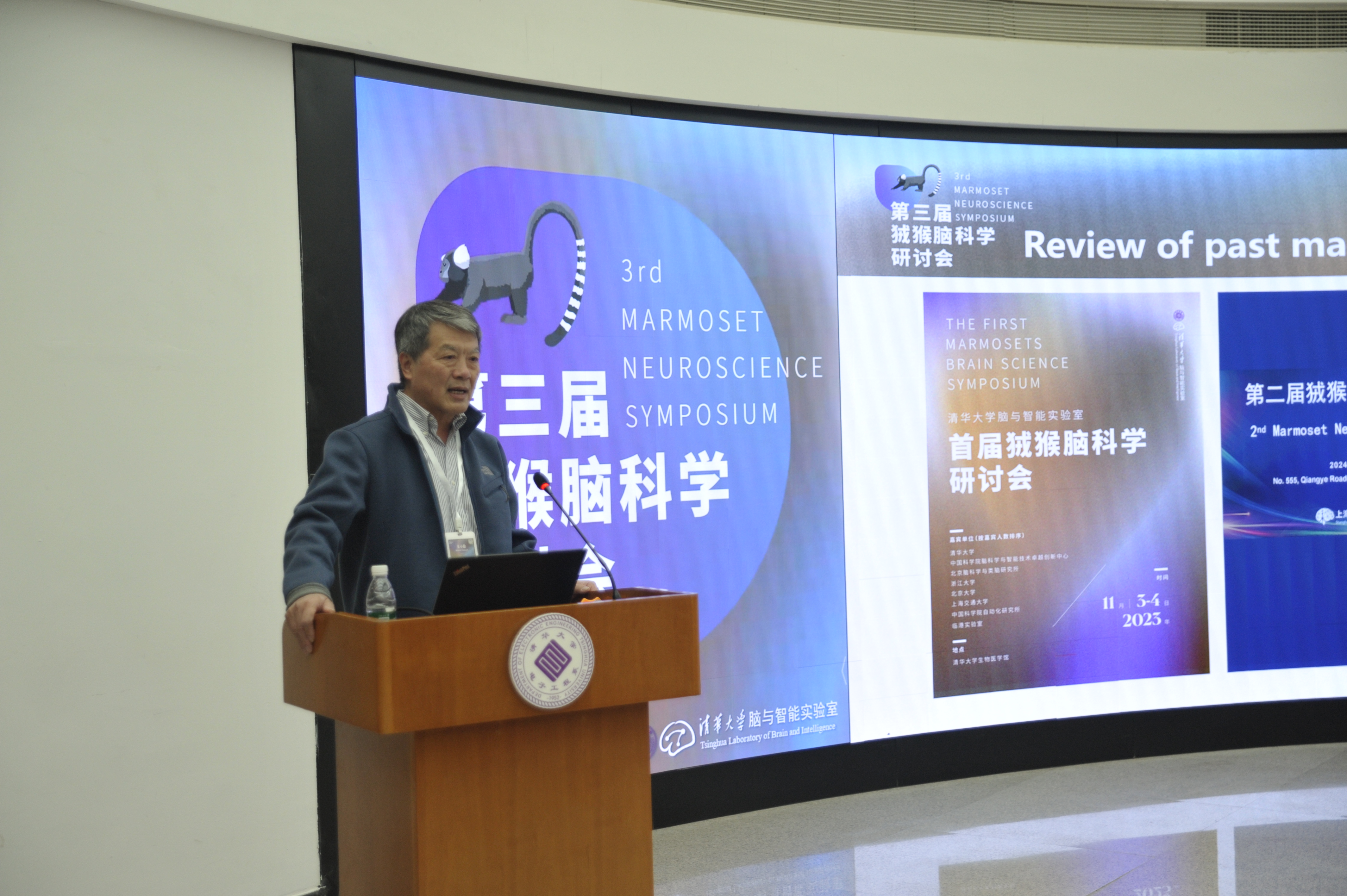
Professor Xiaoqin Wang, director of Tsinghua Laboratory of Brain and Intelligence, delivered the opening address.
The two-day symposium featured keynote presentations by two distinguished scholars in marmoset neuroscience research. Professor Marcello Rosa from Monash University in Australia discussed cutting-edge applications of marmoset models in studying residual vision following damage to primary visual cortex; Professor Masanori Matsuzaki from the University of Tokyo in Japan focused on advanced technological innovations and their applications in marmoset motor and cognitive behavior research.
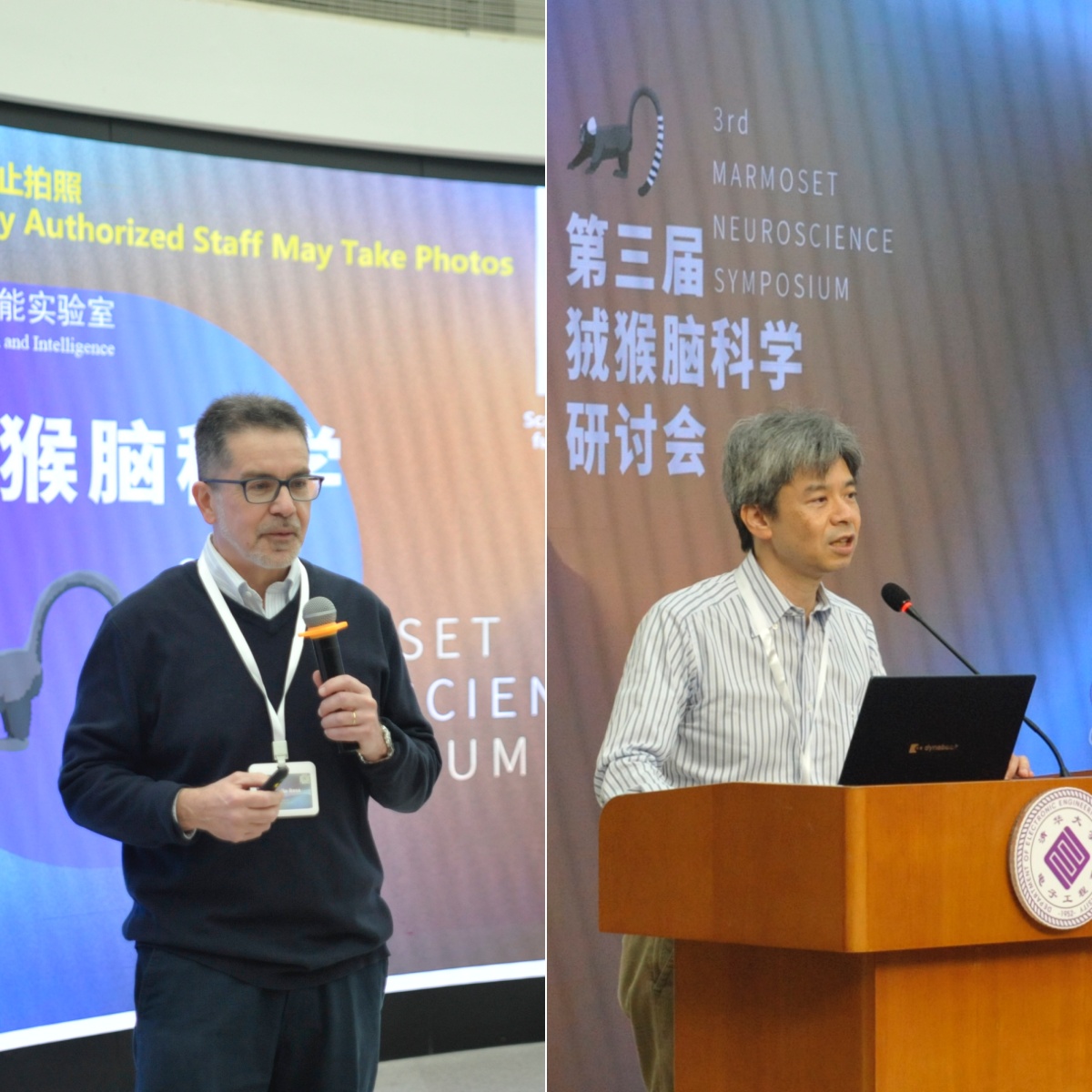
Professor Marcello Rosa from Monash University, Australia, and Professor Masanori Matsuzaki from the University of Tokyo, Japan, delivered keynote presentations.
The symposium also featured invited speakers from China and South Korea, who shared the latest advancements from their laboratories. On the first day: Dr. Xinjian Li from Zhejiang University discussed the functional role of temporal-frontal circuit during multilevel acoustic representation in awake marmoset. Dr. Joji Tsunada from the Chinese Institute for Brain Research, Beijing, elucidated the principles of vocal flexibility in non-human primates from developmental, phylogenetic, and neural mechanisms perspectives. Dr. Neng Gong from the Center for Excellence in Brain Science and Intelligence Technology (CEBSIT), Chinese Academy of Sciences, discussed the critical role of striatal Foxp2 in maintaining vocal stability in marmosets. Dr. Zhen Liu, also from CEBSIT, introduced his team’s use of genetic engineering techniques to achieve efficient targeted gene expression in specific cell types in non-human primate brains.
On the second day: Professor Soo Hyun Park from the Korea Advanced Institute of Science and Technology shared insights into the local and global functional networks and circuit mechanisms of brain regions involved in dynamic visual processing in non-human primate models. Dr. Zhiming Shen from CEBSIT presented a cross-species single-cell spatial transcriptomic atlas of the thalamus, advancing our understanding of its evolutionary conservation and specialization across mammals. Dr. Yuji Naya from Peking University discussed the neural representation of spatiotemporal information in the hippocampus of freely moving marmosets. Dr. Huanhuan Zeng from the Lingang Laboratory showed how behavioral states significantly modulate natural sound processing in the primate auditory cortex by tracking the same neuronal populations under different conditions.
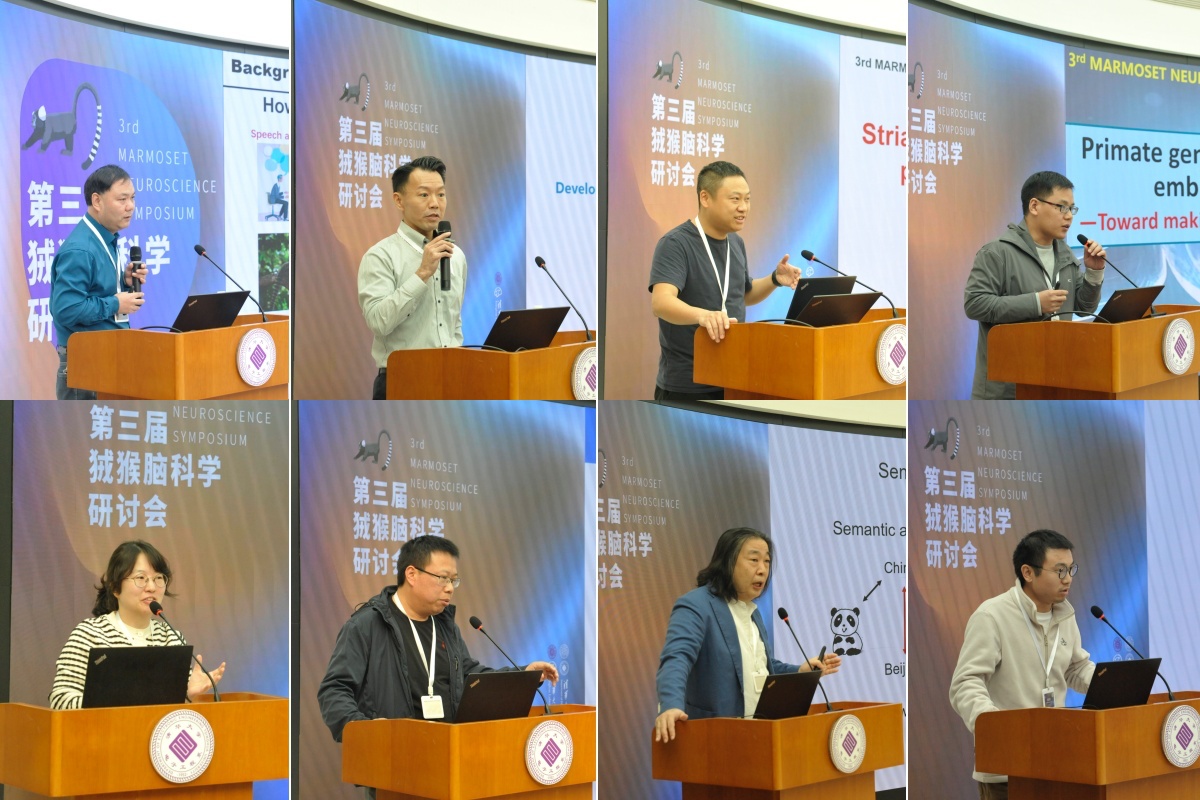
Invited Faculty Speakers (from top to bottom, left to right: Xinjian Li, Joji Tsunada, Neng Gong, Zhen Liu, Soo Hyun Park, Zhiming Shen, Yuji Naya, Huanhuan Zeng)
To encourage greater participation by young researchers to share their progress in marmoset research, the symposium invited 12 graduate students and postdoctoral fellows from various universities and research institutions to present short talks on their research. Their enthusiastic and dynamic presentations injected vibrant youthful energy into the event.

Young scholars presented their research findings during the short talk session
(From top to bottom, left to right: Junfeng Huang, Yukai Xu, Dan Wang, Min Xie, Kaibo Zhang, Ao Fu, Chuanyao Wei, Guozheng Huang, Xingjian Liu, Wenbo Cai, Yixiao Gao, Jiachang Hao)
In addition, the symposium featured poster sessions enhanced by "Teaser Talks”. Each participant delivered a 3-minute short talk to highlight the key message of their posters, followed by in-depth discussions during the poster discussion session. This format not only enhanced the depth of intellectual exchange but also added an engaging and interactive atmosphere to the symposium.

Poster Session: Teaser Talks and Poster Discussion
(The first two rows, from top to bottom and left to right, are: Yuyan Zhu, Huanghe Ye, Yuanda Liao, Diya Yi, Xiao Han, Zeyu Wang, Ling Li, Bing Yuan, Jiankang Xi, Xinyi Zou, Yumian Li, Zhiqian Zhu, Yafeng Zhan)
Beyond the research presentations and poster sessions, the symposium organized four panel discussions, each lasting one hour. The topics covered included "Advanced Technologies and Tools in Marmoset Research", "Vocal Learning and Social Behavior", "Brain-Machine Interfaces and AI Applications", and "Future Directions and Career Opportunities". Each panel discussion was highly interactive, with panelists sharing their perspectives and audience members actively joining the conversation. The sessions achieved true full-audience engagement, with all participants immersed in the dialogue—either speaking enthusiastically or listening attentively—demonstrating remarkable academic passion and intellectual vitality.
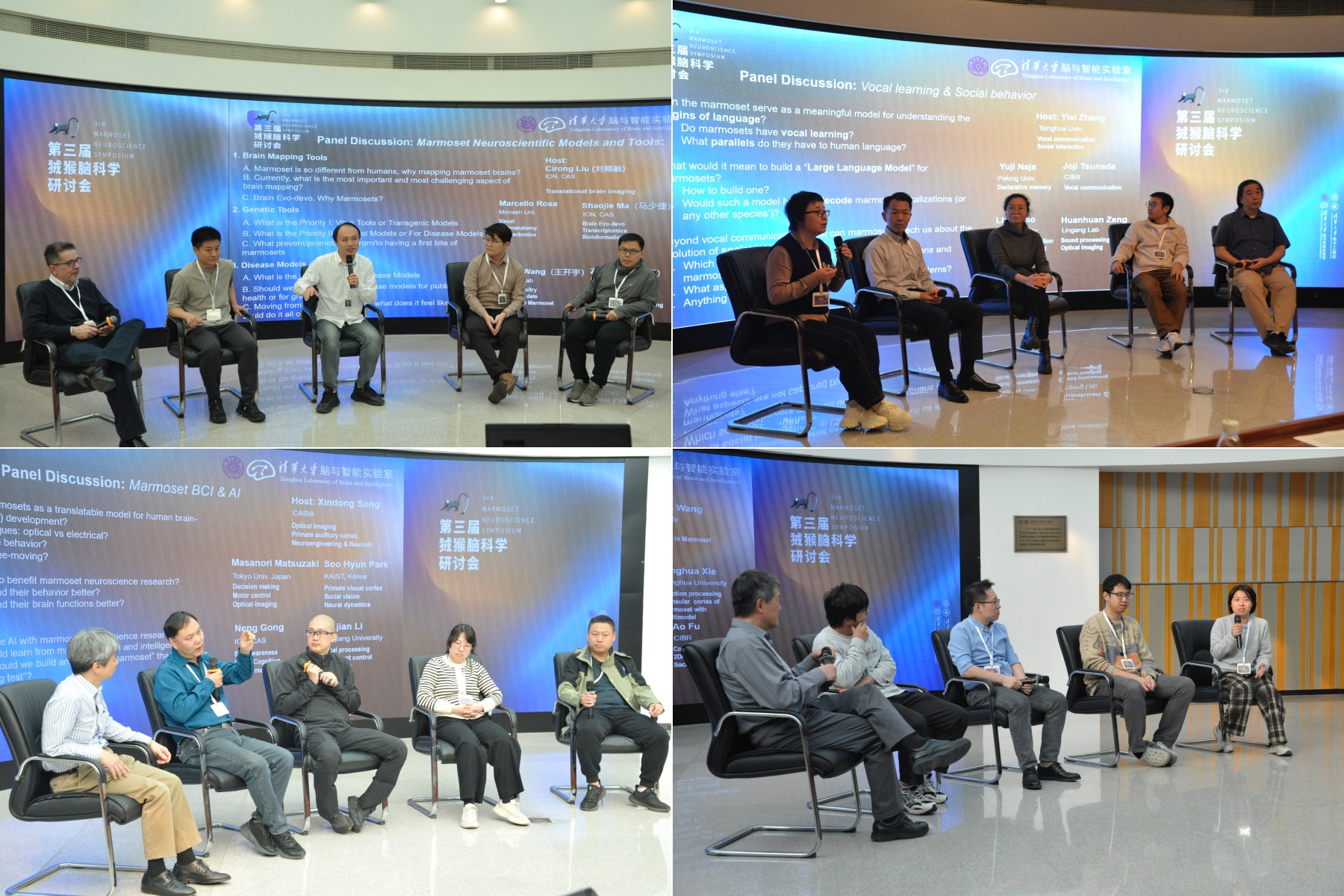
Panel Discussion Session
(From left to right, top to bottom:
Panel 1: Marcello Rosa, Kaiyu Wang, Cirong Liu (Host), Shaojie Ma, Zhen Liu;
Panel 2: Lixia Gao, Tsunada Joji, Yisi Zhang (Host), Huanhuan Zeng, Yuji Naya;
Panel 3: Masanori Matsuzaki, Xinjian Li, Xindong Song (Host), Soo Hyun Park, Neng Gong;
Panel 4: Xiaoqin Wang (Host), Ao Fu, Chun Xu, Yixiao Gao, Fenghua Xie)
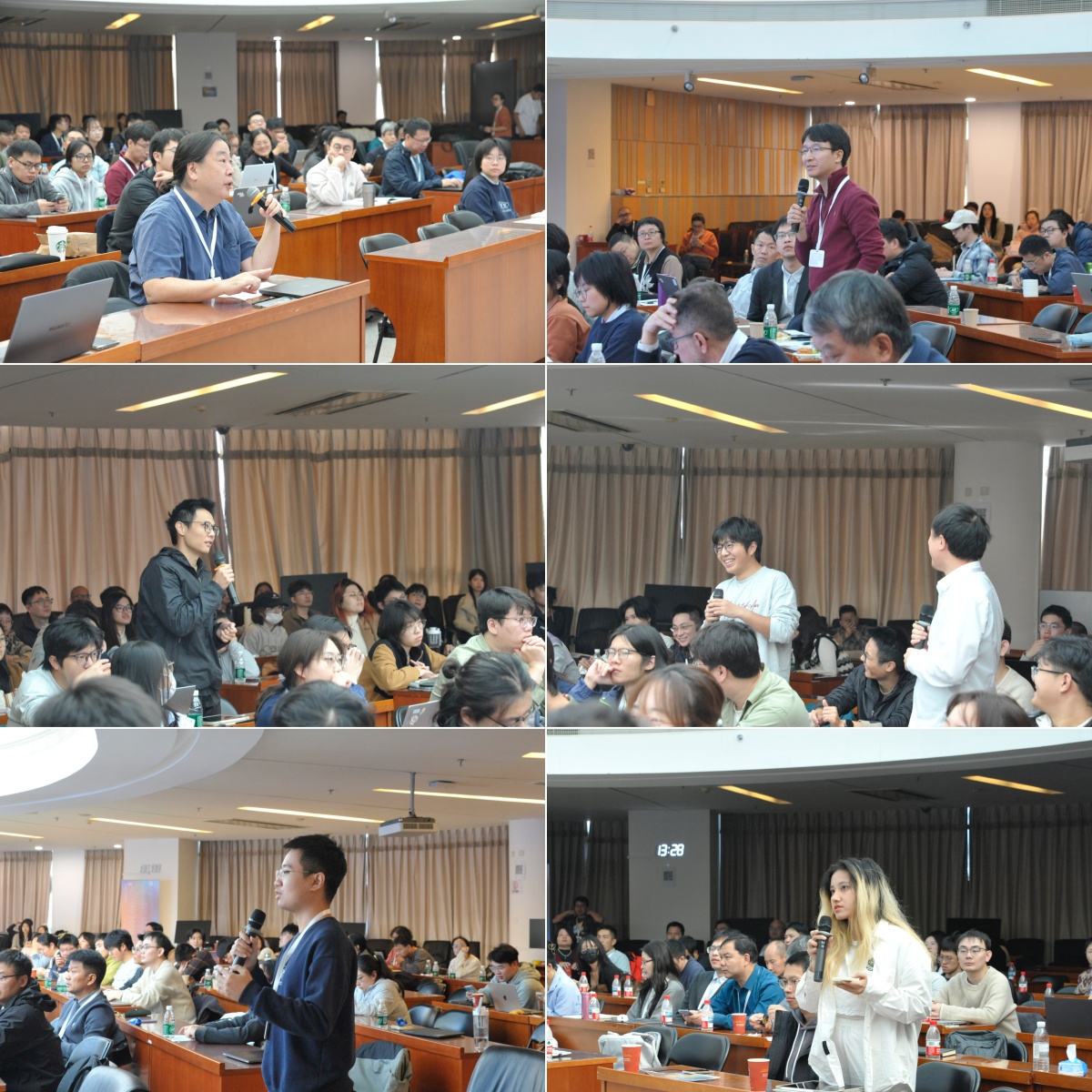
Audience Actively Participating in the Discussion
The symposium concluded with an awards ceremony, where Professor Xiaoqin Wang presented the "Outstanding Oral Presentation Award" and "Excellent Poster Presentation Award" to six students and postdocs. The event drew to a close with warm applause from all attendees.
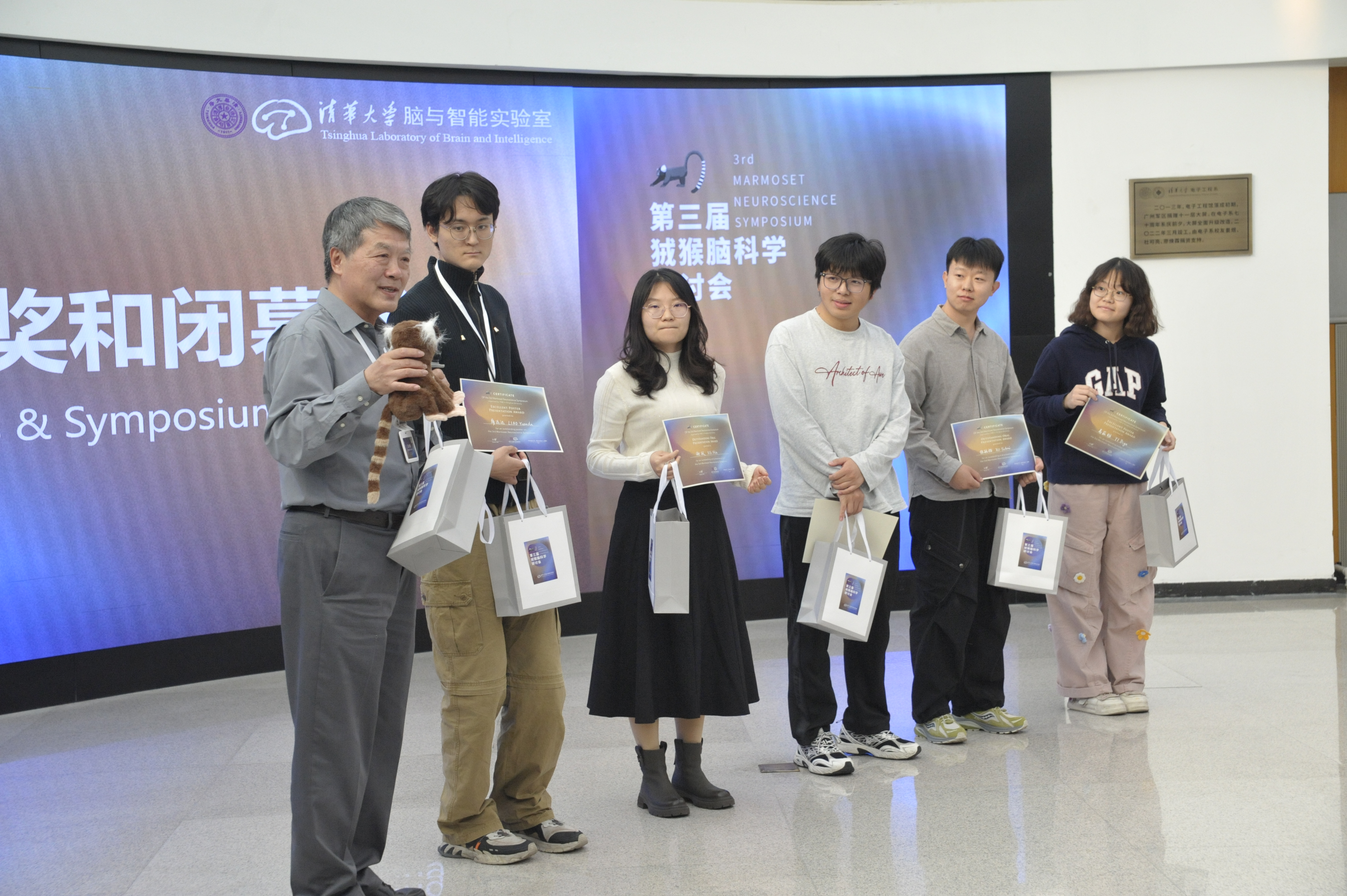
Professor Xiaoqin Wang recognizing award-winning students during the closing ceremony
(Winners of the Outstanding Oral Presentation Award: Yukai Xu, Min Xie, Ao Fu; Winners of the Excellent Poster Presentation Award: Ling Li, Yuanda Liao, Diya Yi)
The success of the 3rd Marmoset Neuroscience Symposium has established a high-quality academic exchange platform for researchers and young scholars from China and the Asia-Pacific region. The symposium showcased a wide range of cutting-edge advances in neural mechanisms, behavioral studies, and technological applications of marmoset models, reflecting the field’s progress and innovations. Following the event, multiple attendees remarked that the symposium demonstrated the rapid development of the marmoset neuroscience field in China, representing a clear step forward from the previous two symposia in terms of both the breadth and innovation of the research.
We look forward to building on this event to foster continued collaboration and dialogue in marmoset neuroscience, addressing research challenges and expanding the boundaries of knowledge. At the same time, we sincerely hope that more young researchers will emerge in coming years and contribute to the advancement of marmoset neuroscience.
The Organizing Committee for this year's Marmoset Neuroscience Symposium consisted of Xiaoqin Wang, Xindong Song, Yisi Zhang, Dongqin Cai, Neng Gong, and Cirong Liu. The committee was collectively responsible for the planning and organization of the event.
